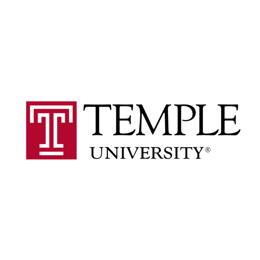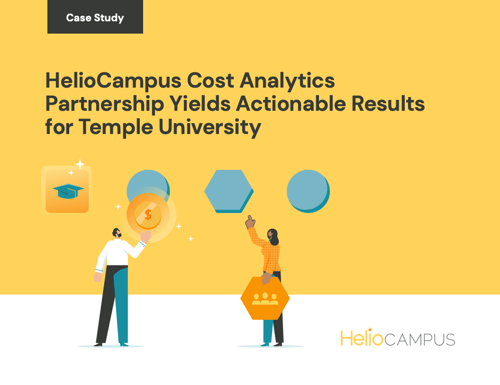Labor Cost Analytics
HelioCampus Cost Analytics Partnership Yields Actionable Results for Temple University

Temple University
Temple University (TU) is a public state-related research university in Philadelphia, Pennsylvania founded in 1884. They are the world’s latest providers of professional education, preparing the largest body of professional practitioners in Pennsylvania.
Even before increased regulatory pressures and funding shifts, TU was already feeling pressure to reduce their cost and operate more efficiently. Although the university is state supported, only about 14% of their yearly budget comes from state appropriated funds. For the rest, they heavily rely on enrollment.
How Temple University uses our Cost Analytics Data
Strategic Allocation of Resources
Temple moved to a decentralized budget model in 2013 and also began utilizing Labor Cost Analytics to review their labor spend data. Coupled with the Administrative Quality Satisfaction Survey (AQSS) to evaluate the efficiency and effectiveness of their administrative labor spend, they were able to make strategic reductions, including a budget reduction of $33 million - all informed by this data.
More Proactive Planning
With increasing pressures impacting financial sustainability, Temple leveraged its' partnership with HelioCampus to do a deep-dive into their operational effectiveness, efficiency, and accuracy — as well as educate their campus on the importance of resource allocation. They have decided to focus investments on high-demand, high-impact areas.
Managing Academic Costs
By utilizing Academic Cost Analytics, Temple has been able to identify underperforming or low enrollment programs and illuminate programs with strong market alignment and enrollment potential, including online education and more flexible learning pathways.
A Dual Approach
Temple now has the data needed to inform resource reallocation, support enrollment-driven academic planning, & guide strategic investments in innovation and growth areas. The changes they have made will allow Temple to reinvest in strategic priorities, including a $35.6 million increase in financial aid and the expansion of online learning initiatives.
A Foundation for the Future
The injection of Labor Cost and Academic Cost data is helping leadership demonstrate to schools and colleges the true depth of investment required for programs to be successful. By continuing to introduce additional datasets, which the university plans to do this fall, leadership is able to further illuminate the full utility of these tools to its schools and across campus.
Learn More About the Results
To make financial decisions that would positively impact their mission, Temple partnered with HelioCampus. Read the case study to learn more about how Temple was able to utilize Cost Analytics to support structural reforms, targeted reductions, identify hidden costs and optimize faculty workloads, protecting their bottom line.



